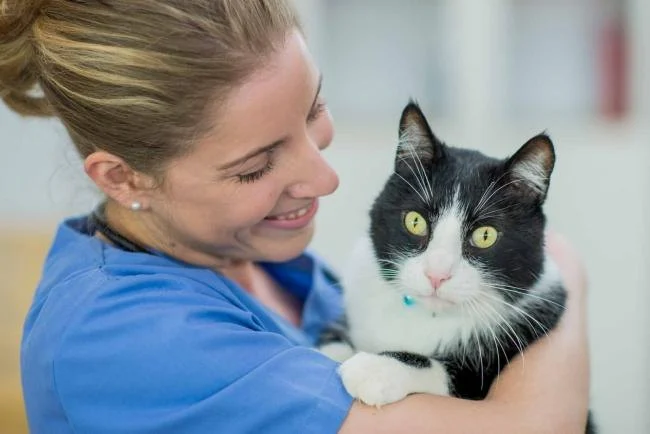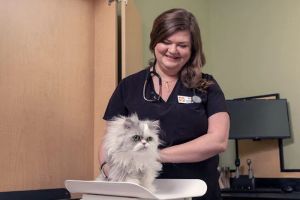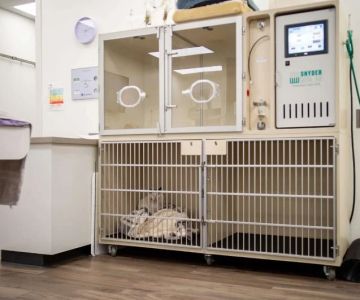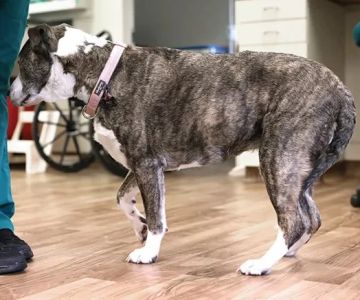
How to Make Vet Visits Less Stressful for Pets
- 1- Understanding Pet Anxiety During Vet Visits
- 2- Preparing Your Pet for a Vet Visit
- 3- How to Make the Vet Visit Comfortable for Your Pet
- 4- Managing Pet Stress After the Vet Visit
- 5- Real-Life Example: Easing Pet Anxiety During Vet Visits
1- Understanding Pet Anxiety During Vet Visits
Vet visits can be a stressful experience for both pets and their owners. For pets, the unfamiliar environment, strange smells, and handling by strangers can trigger anxiety and fear. Understanding the signs of anxiety in pets is crucial for preparing for a smoother visit. Some common signs of anxiety in pets include:
- Excessive drooling or panting
- Shaking or trembling
- Hiding or avoiding contact
- Aggression or resistance to handling
Being aware of these signs helps owners to better understand their pet’s stress levels and take steps to alleviate them before and during the vet visit.

Fort Knox Veterinary Treatment Facility
Fort KnoxHardin CountyKentucky
192nd Tank Battalion Rd, Fort Knox, KY 40121, USA
2- Preparing Your Pet for a Vet Visit
Preparation is key to reducing your pet’s anxiety before the vet visit. Here are some effective strategies to help your pet feel more comfortable:
- Desensitize your pet to the carrier: If your pet is afraid of the carrier, start by making it a positive space. Place treats, toys, or familiar bedding inside to create a safe environment for them.
- Practice short trips: Take your pet on short car rides before the actual vet visit. This will help them become accustomed to being in the car and reduce travel anxiety.
- Stay calm: Pets are very sensitive to their owners' emotions. Keeping a calm and positive demeanor can help reassure your pet during the visit.
By making your pet’s environment familiar and positive, you can reduce the stress associated with the vet visit.
3- How to Make the Vet Visit Comfortable for Your Pet
Once at the vet, there are several ways to make the experience more comfortable for your pet:
- Stay with your pet: Whenever possible, stay close to your pet during the examination. Your presence can provide comfort and security.
- Bring familiar items: Bring along your pet’s favorite blanket or toy to create a sense of familiarity in the exam room.
- Use calming aids: Consider using pheromone sprays or calming music, which can help reduce anxiety in pets during the visit.
By ensuring your pet feels secure and comfortable, you can minimize the stress and make the visit more manageable for both you and your furry friend.
4- Managing Pet Stress After the Vet Visit
After the vet visit, it’s essential to help your pet recover from the stress they may have experienced. Here are some tips to manage post-visit stress:
- Provide a calm environment: Allow your pet to rest in a quiet, familiar space where they can relax and recover from the stress of the visit.
- Offer comfort: Provide extra attention, gentle petting, and comforting words to reassure your pet after the visit.
- Maintain normal routines: Keeping your pet’s feeding and walking schedules consistent can help them feel secure and reduce anxiety.
Helping your pet unwind and return to their usual routine will help them recover faster from any stress they experienced during the visit.
5- Real-Life Example: Easing Pet Anxiety During Vet Visits
Consider the case of Max, a rescue dog who was terrified of going to the vet. His owner, Sarah, took proactive steps to desensitize him to the carrier by placing treats and his favorite blanket inside. She also took him on short car rides to reduce his travel anxiety. On the day of the visit, Sarah remained calm and stayed close to Max during the examination. She brought along his blanket for added comfort and used a calming pheromone spray to help ease his nerves.
By implementing these strategies, Sarah was able to reduce Max's anxiety and make his vet visits less stressful, leading to a healthier and happier dog.
For more tips on making vet visits stress-free, or to find pet care products and services that can help ease your pet’s anxiety, visit Pet & Puppy for expert advice and product recommendations.








 Primary Pet Care4.0 (114 reviews)
Primary Pet Care4.0 (114 reviews) Warrick Veterinary Clinic Preventative Care Center3.0 (7 reviews)
Warrick Veterinary Clinic Preventative Care Center3.0 (7 reviews) Banfield Pet Hospital4.0 (179 reviews)
Banfield Pet Hospital4.0 (179 reviews) Lexington Hospital For Cats4.0 (91 reviews)
Lexington Hospital For Cats4.0 (91 reviews) Twin Maples Veterinary Hospital4.0 (1184 reviews)
Twin Maples Veterinary Hospital4.0 (1184 reviews) Vetco Vaccination Clinic4.0 (4 reviews)
Vetco Vaccination Clinic4.0 (4 reviews) How to Teach Your Pet to Enjoy Baths & Grooming: A Complete Guide
How to Teach Your Pet to Enjoy Baths & Grooming: A Complete Guide Managing Chronic Conditions in Pets: Essential Diet, Medication & Lifestyle Tips
Managing Chronic Conditions in Pets: Essential Diet, Medication & Lifestyle Tips How to Tell if Your Pet Is in Pain (When They Can’t Speak)
How to Tell if Your Pet Is in Pain (When They Can’t Speak) Pet Insurance 101: What It Covers & When It Pays
Pet Insurance 101: What It Covers & When It Pays How Pet Recovery Rooms Are Being Designed in Modern Clinics
How Pet Recovery Rooms Are Being Designed in Modern Clinics Explaining Pet Wellness Plans vs Traditional Vet Visits
Explaining Pet Wellness Plans vs Traditional Vet Visits